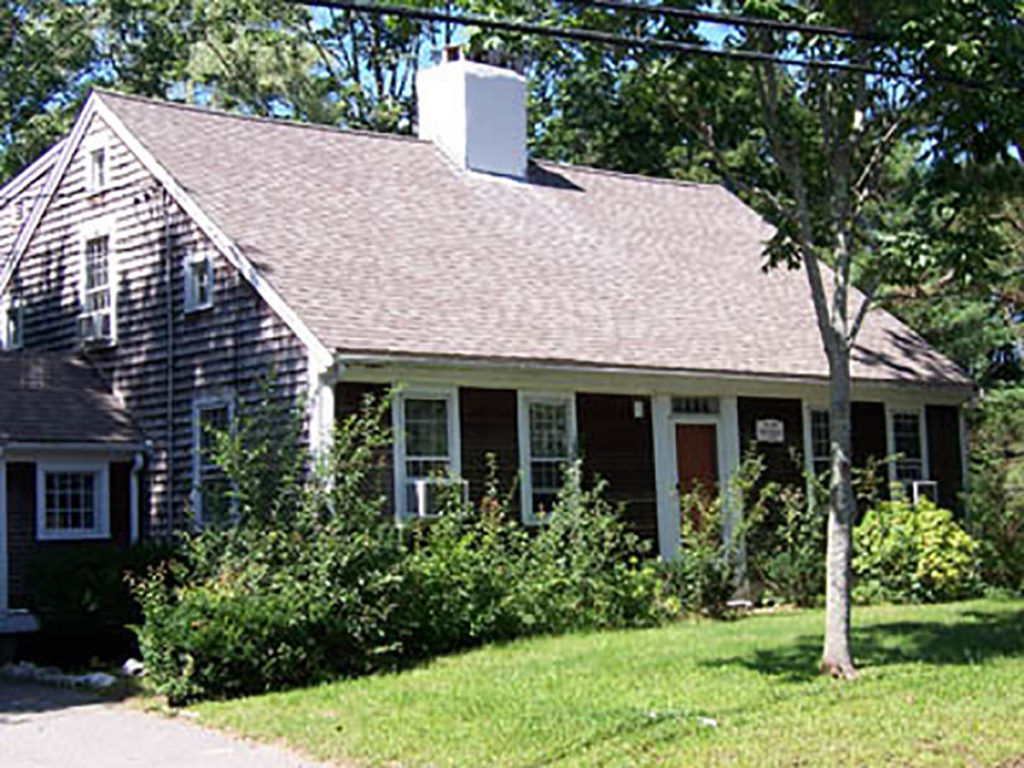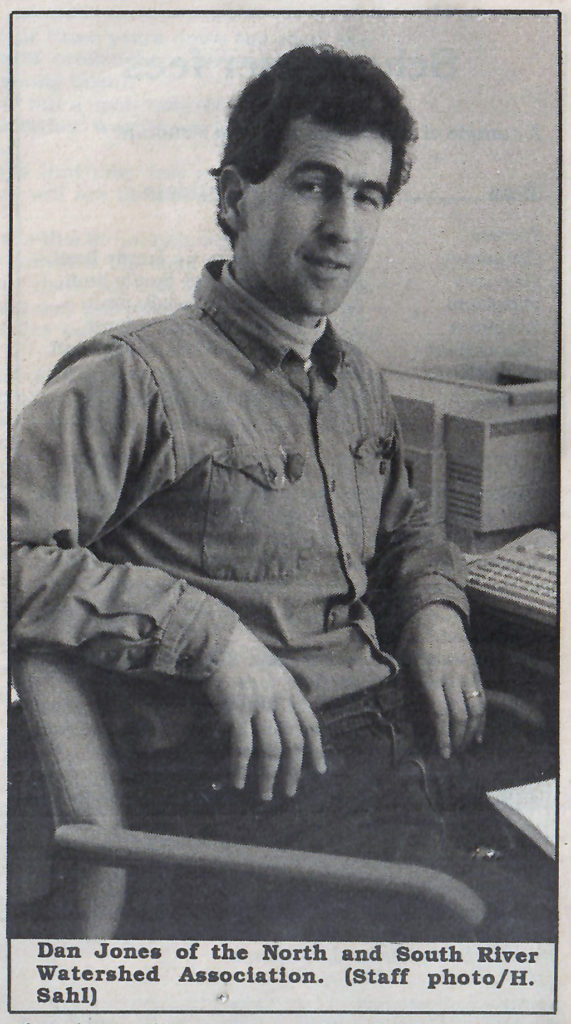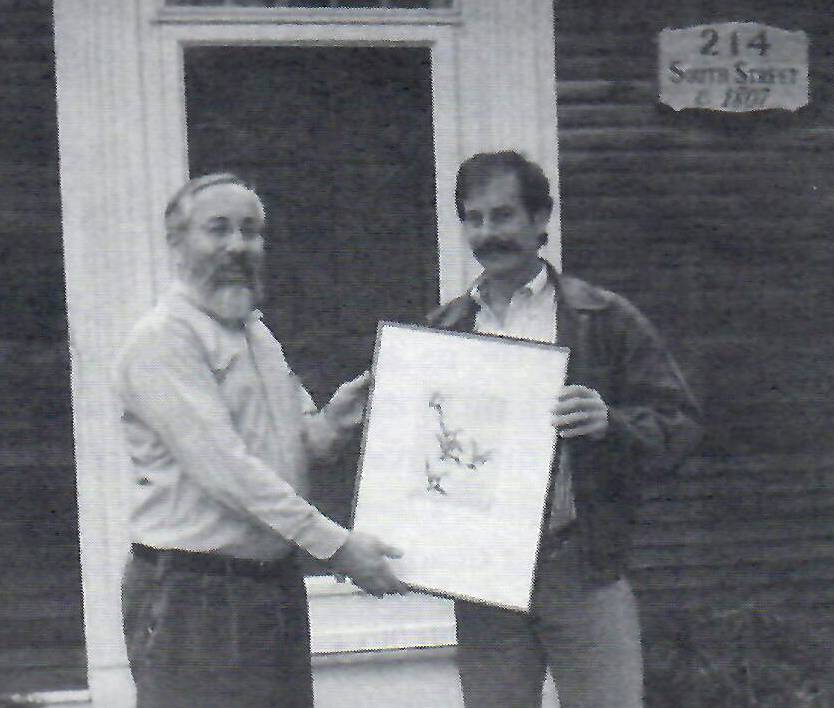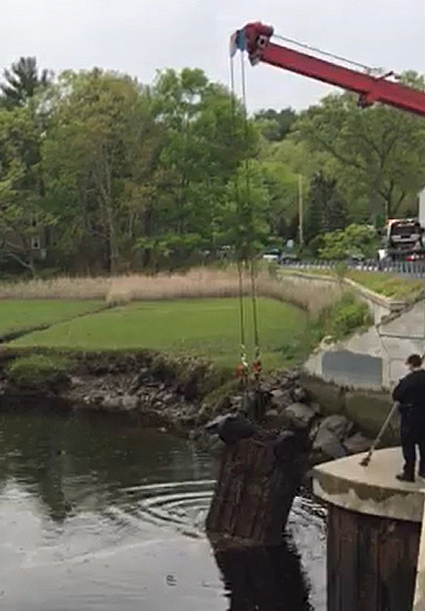A Second Wind: “Watershed Wakes Up — How About You”
(Newsletter, May 1989)
 By Jim Glinski, Scituate
By Jim Glinski, Scituate
In a frank letter to its members in May 1989, the NSRWA admitted that after the passage of the North River Scenic Protective Order in 1978, “we all relaxed because it seemed like the state would take care of us” and the Watershed Association went into hibernation. “Ten years later we have a more realistic view of the situation” and realize that someone else besides the state has to take action and the Watershed Association is “now committing itself to becoming the major private protector of our beautiful rivers.”
In June, it was announced that the NSRWA would be opening its central office in an antique cape house at 214 South Street, in Norwell. This property was owned by Cap Vinal, one of the leaders of the revitalization of the organization, who rented the building to the NSRWA at far below prevailing rates. In November 1996, Cap sold the property to the NSRWA at only 20% of its appraised value. Another NSRWA member provided a low interest loan for the purchase, while rent from the upstairs apartment would cover most of the building’s operating expenses.
 The NSRWA hired Dan Jones to run the new headquarters, becoming the organization’s first Executive Director. Over the course of Dan’s tenure, the Watershed Association’s membership would grow from 30 to 750 individuals, businesses, and families. As noted in the NSRWA’s September 1994 newsletter, under his leadership the organization would be transformed from “an elusive association of people with an affinity for the local rivers to a highly publicized and accessible environmental action group.” One of Dan’s most impressive accomplishments was the transformation of River Watch, from an irregular, typed leaflet into a quarterly desktop-published newsletter which has remained a key vehicle to inform the public about NSRWA activities and upcoming events and projects.
The NSRWA hired Dan Jones to run the new headquarters, becoming the organization’s first Executive Director. Over the course of Dan’s tenure, the Watershed Association’s membership would grow from 30 to 750 individuals, businesses, and families. As noted in the NSRWA’s September 1994 newsletter, under his leadership the organization would be transformed from “an elusive association of people with an affinity for the local rivers to a highly publicized and accessible environmental action group.” One of Dan’s most impressive accomplishments was the transformation of River Watch, from an irregular, typed leaflet into a quarterly desktop-published newsletter which has remained a key vehicle to inform the public about NSRWA activities and upcoming events and projects.
Evidence that the beautiful rivers needed protection came in the form of a series of articles published by The Patriot Ledger in July 1986, entitled “The North River at Risk.” One article highlighted the closing of the shellfish beds on the river as a result of pollution, with all the beds west of Route 3A closed year-round and those east of 3A in the warmer summer months. Another article discussed the impact of development along the river, especially the impact of condominium developments such as James Landing on the Driftway and on the property of the Scituate Country Club.
Although the state had been finding evidence of bacterial pollution for years, it was not until the Department of Environmental Quality (DEQE) began more frequent testing and closed the shellfish beds that people began to pay attention. The potential sources of pollution were many, including sewage treatment plants, such as the one in Scituate, storm drains, seepage from landfills, waste from boats, septic systems tied into storm drains, and possible illegal dumping by septage haulers. As a result of these findings the state pressured the North River Commission to establish a one-year pollution control project, funded by the state and the river towns. In 1987, the Commission published a report which identified 25 pollution sources along the river, including the usual suspects of the types identified above. Unfortunately, in 1988, funding for the continued study of North River pollution sources was postponed for at least a year by the Department of Environmental Management as the state was attempting to balance its budget. The delay came despite indications of worsening pollution, including fecal coliform bacteria counts at the mouth of the river in Scituate which registered at the highest level that could be measured by the equipment used by the state.

The Watershed Association had already begun to “wake up” four years earlier when its board members decided it was time to regenerate the organization. This meant recruiting new blood and choosing a new board of directors. This occurred at what became known as the Famous Fuller Cocktail Party of 1985. As Damon Reed recalled, he attended what he thought was a social event at the home of Peirce and Kay Fuller. But while the Fuller’s guests relaxed over cocktails, Peirce Fuller brought out a gavel and called the annual meeting of the North and South River Watershed Association to order. He read the minutes of the last meeting, which was held five years ago, and reported there was $2,500 in the Association’s account. Next, Reed recalled, “a nominating committee read the slate of officers- and it was us and we were all elected. Before we left Peirce Fuller made us pay $15 each in dues.” Alex Clark was elected president, but was soon replaced by Damon Reed, who by 1988 headed a board which included Arthur “Cap” Vinal, Vice-President; Barbara Carney, Secretary; and Jeff Fitzgerald, Treasurer.
 In its last newsletter of 1986 the NSRWA noted its accomplishments for the past year, which included:
In its last newsletter of 1986 the NSRWA noted its accomplishments for the past year, which included:
- Supporting local Boards of Health in their efforts to eliminate known sources of pollution in the rivers.
- Successfully arguing for the installation of a gate to control access during the night at the Bridge Street Landing in Norwell to prevent the dumping of cars into the North River. (In November 2017, using sonar and underwater robots with cameras, officials found at least 13 cars in the North River near the Union Street bridge. In May 2018, two cars, one resting against the bridge, the other 25 yards from the bridge in the middle of the river, were removed. One of the cars had been stolen years earlier in South Boston.)
- Supporting the North River Commission in its decisions to deny or condition projects to reduce detrimental effects on the North River scenic corridor.
- Persuading the owner of a major coastal development in Scituate, James Landing, to install a public pump out facility for marine holding tanks.
They also identified their objectives for 1987, which included:
- Establishing working relationships with local Boards of Health, Water Departments and Conservation Commissions and lend assistance in their effort to preserve and improve ground water quality.
- Legally establishing the boundaries of the 50 acre parcel of “marsh and beach land” in Scituate (the Spit) which was deeded to the NSRWA some years ago. Some members believe we might all be pleasantly surprised at what it is we actually own.
- Continuing efforts to eliminate point sources of pollution in the North and South Rivers.
- Continuing efforts to build awareness and appreciation for the various water resources that exist within the Watershed.
- Constantly monitoring the discharge of untreated waste by the Scituate Sewage Treatment Plant and advising our local media of each discharge event in a continuing effort to bring the magnitude of this pollution problem to the attention of the general public.
It would be the last objective that would be the main focus of the NSRWA for several years to come and require a tremendous amount of effort, time, and funding.
